Antistatic, static electricity, dust and particle problems
Main menu:
Digital printing
Support / Links - PDF > Applications_list
![]() Digital Printing
Digital Printing ![]()
In recent years, digital printers have made a rapid entry in the graphics industry. Those can be seen as further development of the ubiquitous laser printers used on the output units at larger centers, but with the difference that we now can write / print in colour.
The paper as well as the colour, must meet specific quality requirements to achieve optimal outcome of the character quality.
Special features of the process are that the paper completely dry out the fixation of color in the paper. Thus, the paper will after printing dissipate static electricity very slowly, due to lack of moisture, which in turn will cause much trouble at the sheet reversal and later finishing with a great risk that entire investment will be a failure.
Solution
Infeeder
The feeding of sheets for a digital printer is less troublesome than for a conventional printing press, there double sheet often causes severe problems. As far as space, antistatic bars and blowing air nozzles can be mounted on the feeder. In such away, the sheets are being discharged during the feeding to prevent creating double sheet and maladjustment of the grippers. It is particular sensitive to run an edition which shall pass digital printing more than once.
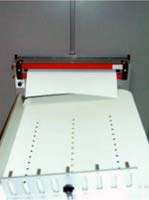
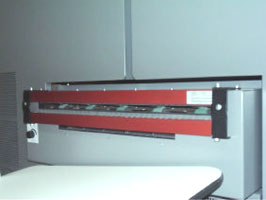
Sheet reversal
On the sheet reversal two antistatic bars ABAC11 are mounted, one from the bottom side of the sheet and one of its top sides. Since every sheet is discharged the sheets are going to "flow out" in a consistent manner and thereby generating more regular piles.
Finishing
Once the equipment has been installed on the digital printing press, one might think that the problem of static electricity should be out of the world, but unfortunately this is rarely so. Since the paper during the printing process has become completely dry, it can be recharged very easily in the handling after the sheet reversal, i.e. after the finishing. In most cases, there is no time for conditioning the paper after printing so that moisture can be returned to the paper.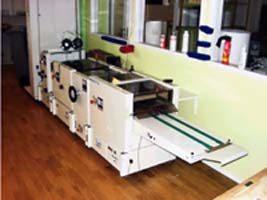
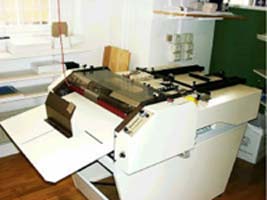
The problem can occur with most finishing operations including folding, picking, stapling, cutting, scoring, etc.. We are making continuous installations on different types of machines that exist on the market.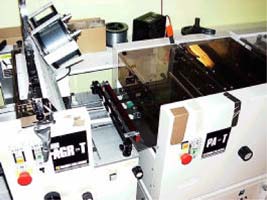
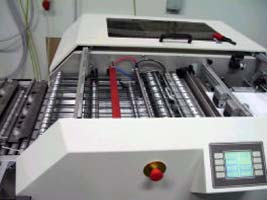
Installation
Installation is done with dedicated brackets and fasteners that in addition requires a grounded power outlet (or permanent installation to the machine's distribution board), and in installations with blowing antistatic bars also dry and clean compressed air.

